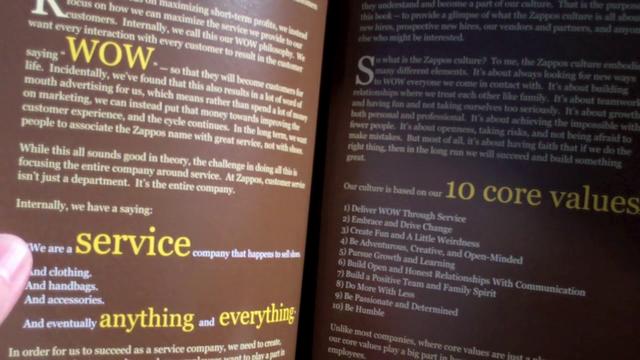
There’s a lot to be said for world class customer service. Companies that get it right go on to achieve legendary status as household names – think Zappos and LLBean.
Companies that don’t tend to suffer the wrath of the social sphere, where one false move can damage their reputation in a ripple-effect throughout the web.
Although we can’t (and shouldn’t) copy the “good guys”, we can still learn a great deal from them. There are some things we can learn from the best, but I advise you to shape and rework their methods and strategies to fit your own business goals.
After all, you can’t go around proudly crowing about how your site has the best service if you don’t answer customer emails for a week.
Getting the foundation of great service and great products is the first step. Letting customers know about it is the second, and then reinforcing that great service in every action you take is the ultimate goal that gets your brand cemented (and promoted) as the company to do business with.
With this in mind, let’s take a closer look at what some of today’s top-rated companies are doing to make sure world class customer service is at the forefront of everything they do.
How Top Companies Provide World Class Customer Service
Creating a Culture of Service
 Zappos Company Values – See the Full Video of the Book Here
Zappos Company Values – See the Full Video of the Book Here
The Zappos brand is synonymous with world class customer service – and it’s not just a branding gimmick. Their company culture guide includes gems such as:
We are a service company that happens to sell shoes (and clothing and handbags and accessories). Notice how they put service first. They’re not a shoe store or a boutique, but a service company.
Deliver WOW through service – “WOW” is not one of those measurable emotions, but you certainly know it when you see it.
It’s the kind of thing that causes people to refer their friends – not because they’ve been asked to, but because they were so impressed, they couldn’t help but mention it. Referring people to great service makes them look good!
Do More with Less – You don’t have to have the latest and greatest of everything in order to become a customer service behemoth. Look for ways to continually grow based on what you have, which is oftentimes your people.
Know Your Product or Service from Top to Bottom
If I were in the market for a car stereo, I’d want to know a few things – will it fit in my car? Would it be difficult to install? Does it sound good? And what happens if I need help with it?
Most manufacturers provide a few spec sheets, but over at Crutchfield, the employees take the time to get to know the product inside out.
 Crutchfield employees spend time measuring, examining and researching their products in order to help customers better understand them
Crutchfield employees spend time measuring, examining and researching their products in order to help customers better understand them
It’s one thing to have a live chat with a “customer service agent” who can rattle off some specs about a car stereo, but it’s another thing entirely if you talked to someone who could immediately tell you if said car stereo would fit in your new Toyota and how easy it is to adjust it to incorporate your playlist.
The key takeaway here is this – get the time to truly know what you’re selling. Learn its pros and cons (and yes, there will be cons).
Be able to simplify your product into non-technical terms that a 10 year old could understand. Don’t just direct customers to an answer somewhere – be the answer!
Fixing Customer Service Problems Before They Happen

Hard drive manufacturer EMC was on the verge of bankruptcy in the late 1980s. Faulty disk drives for major corporations and retailers caused crucial inventory and storage data to come to a screeching halt.
Company officials tried to mitigate the damage as best they could, but one explanation into another turned into a blurry, muddy mess.
EMC’s executive vice president of operations and customer service, Matt Ruettgers, devised a plan to help soothe the rightfully angry customers – they could either exchange their faulty drive for a new EMC drive, or one made by rival IBM, but paid for at EMC’s expense.
It was a bold, unconventional strategy to be sure, and according to an article in Fast Company, one that almost caused the company to fold.
But Ruettgers instilled some major changes after the dust settled: a set of rigorous “checks and balances” – hard drives and storage solutions that monitored areas prone to failure, like temperature gauges and power fluctuations.
A new process was created where teams of customer support engineers were notified of escalating problems the moment they happened.
When your business hinges on multi-billion-dollar companies having access to their data – compromising just isn’t a possibility.
Make Customer Service a Part of Your Workspace
 For Rackspace, fanatical support isn’t just a slogan – it’s a way of life
For Rackspace, fanatical support isn’t just a slogan – it’s a way of life
Rackspace, a company born out of the dormitory of three college students, has grown to become the host of choice for a wide range of corporations in a variety of industries.
With these kinds of ecommerce heavyweights, having the customer service to back up your technical expertise isn’t just a nicety, it’s a requirement.
With that being said, instead of shoehorning people into various departments scattered around the building, RackSpace’s open workspace setup is more like a set of pods, each overseen by a team leader.
Each pod is made up of different specialists – tech support, account managers and billing to name a few.
People who are familiar with that customer’s account can work together right from their desk to solve their issue – no more trudging down the hall to find that the billing manager has taken a 30 minute coffee break, and the account administrator is nowhere to be seen.
World Class Customer Service: Action Summary
Don’t just read these success stories as feel-good inspiration. Take the following action steps to make them a part of your company – starting today:
- ·Create a culture of customer service – Make sure your values go beyond the employee handbook. Emblazon them on t-shirts and wallpaper if you have to. Make everything you do to help customers elicit a WOW response.
- Know your product or service like no one else – Take the time to learn more about it beyond the product or spec sheets. Learn what it’s made of, try it yourself and get the detailed information that your competitors are too lazy to figure out.
- Anticipate customer issues – then solve them – What are the most common customer problems or complaints about your service, and what can you do to improve or eliminate them entirely? A thorough, integrated knowledge base can work wonders for cutting back on support inquiries.
- Create a workspace that’s central to service – Don’t make customers jump through flaming hoops to reach someone at your organization. Consider reworking your workspace to ensure that all of the most common customer needs are met within seconds.
I’d love to hear your thoughts on how your experiences have been like with amazing customer experiences! Please do post them in the comments below!


